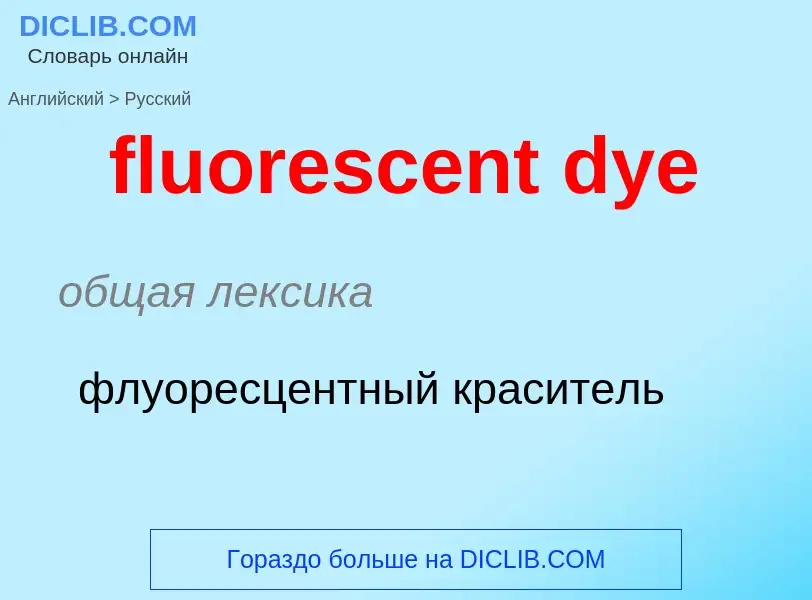Translation and analysis of words by ChatGPT artificial intelligence
On this page you can get a detailed analysis of a word or phrase, produced by the best artificial intelligence technology to date:
- how the word is used
- frequency of use
- it is used more often in oral or written speech
- word translation options
- usage examples (several phrases with translation)
- etymology
fluorescent dye - translation to russian
общая лексика
флуоресцентный краситель
общая лексика
флуорохром
медицина
флюоресцентная окраска
Definition
Wikipedia

A fluorophore (or fluorochrome, similarly to a chromophore) is a fluorescent chemical compound that can re-emit light upon light excitation. Fluorophores typically contain several combined aromatic groups, or planar or cyclic molecules with several π bonds.
Fluorophores are sometimes used alone, as a tracer in fluids, as a dye for staining of certain structures, as a substrate of enzymes, or as a probe or indicator (when its fluorescence is affected by environmental aspects such as polarity or ions). More generally they are covalently bonded to a macromolecule, serving as a marker (or dye, or tag, or reporter) for affine or bioactive reagents (antibodies, peptides, nucleic acids). Fluorophores are notably used to stain tissues, cells, or materials in a variety of analytical methods, i.e., fluorescent imaging and spectroscopy.
Fluorescein, via its amine-reactive isothiocyanate derivative fluorescein isothiocyanate (FITC), has been one of the most popular fluorophores. From antibody labeling, the applications have spread to nucleic acids thanks to carboxyfluorescein (FAM), TET, ...). Other historically common fluorophores are derivatives of rhodamine (TRITC), coumarin, and cyanine. Newer generations of fluorophores, many of which are proprietary, often perform better, being more photostable, brighter, and/or less pH-sensitive than traditional dyes with comparable excitation and emission.


